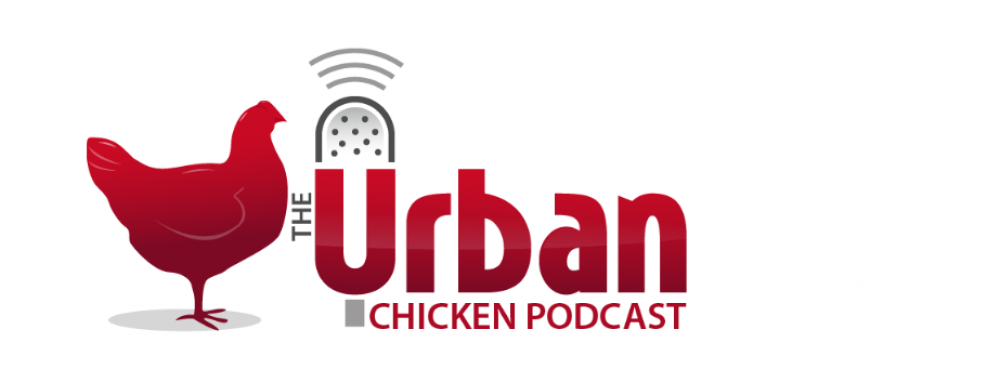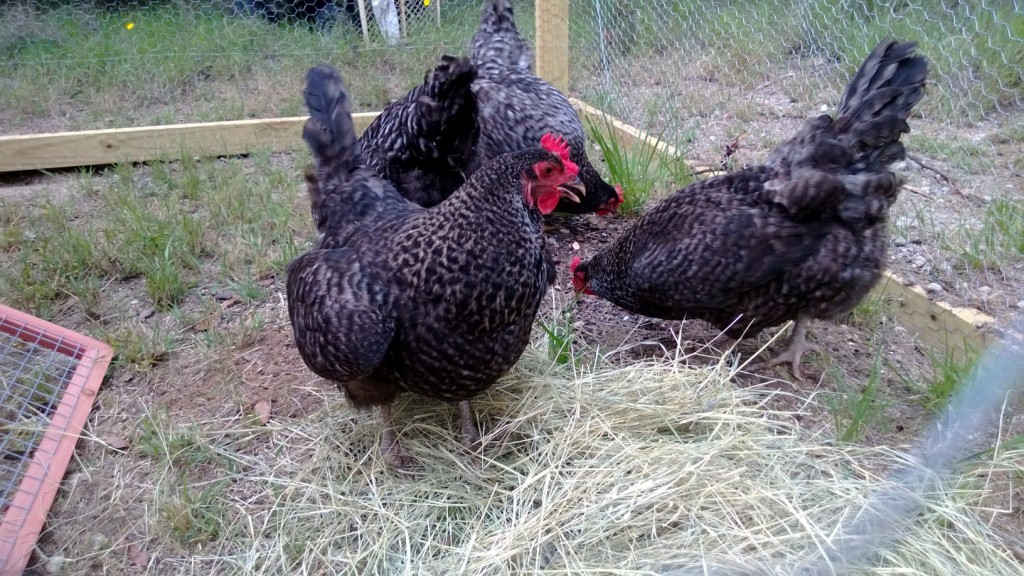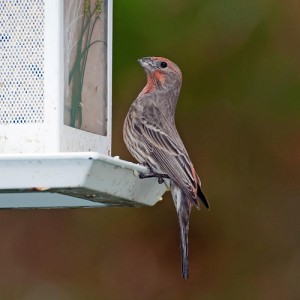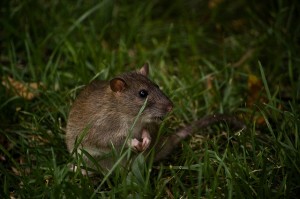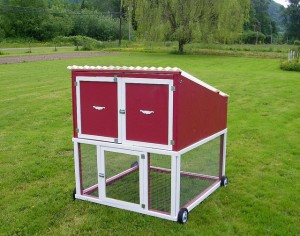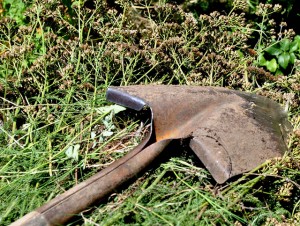Keeping you backyard flock of chickens healthy and safe requires more than just providing them clean water and food and secure housing. One of the most important considerations for the conscientious chicken keeper, that is unfortunately often overlooked, is the issue of bio-security. On this week’s episode of the Urban Chicken Podcast, we take an in depth look at the issue of protecting your birds for inadvertent exposure to illness, pests and deadly diseases.
As mentioned in last week’s episode, I have recently attended a couple large poultry shows in the past month. Attending these poultry has made me mindful of a very serious and important issue for chicken keepers of all levels – Biosecurity. Biosecurity is just a fancy way of describing using preventative and protective measures which are designed to eliminate inadvertently exposing your backyard flock to illness, pests and deadly diseases from outside sources.
Biosecurity can be grouped into four main categories of exposure sources. Let’s consider those categories:
Category One – Wild Birds and Other Creatures
One of the biggest culprits for spreading pests and disease amongst backyard flocks of chickens is wild birds. Though the sparrows, robins, finches and other little birds in nature are lovely, they are also commonly covered in lice and mites. (If you are not up on all your facts on lice and mites you can learn all about these creepy crawlies in UCP Episode 014). Mice, rats and other little rodents attracted to your coop are also often carriers of lice too.
In addition to having pests spread inside your coop and to your flock from wild birds and rodents, you must also worry about these creatures bring illness and disease to your birds. Research has shown that migratory species of birds are a significant carrier and spreader of deadly diseases, such as avian flu. Wild birds, as well as little rodents, are opportunistic. They seek to share your flock’s feed, treats and water, thereby contaminating those items with their illnesses and diseases.
Consequently, you should, to the best of your ability, try to limit contact between wild birds and your chickens. Restrict access that wild animals have to your flock’s food, water and housing. Kill off rats, mice and other rodents that are plaguing your coop. Moreover, don’t purposefully attract wild birds to your yard. It may be tempting to put out feeders for the wild birds in your yard – but by doing so you are attracting the nuisance to your property and flock. Don’t encourage wild birds to be around your chickens for the safety of your flock.
Category Two – Chickens Coming and Going into Your Yard
Your healthy flock of backyard birds essentially lives on an island. Your backyard is this island – marvelously isolated from other people and animals. It is because your backyard island is a safe zone for your hens that you must be scrupulously mindful about chicken going off and coming onto the island.
The issue of coming onto and going from your backyard island of chicken haven, usually arises when you either one of your flock to a chicken show or you obtain new birds to augment an already established flock. Chickens that have been off the island of your backyard have been exposed to elements and pathogens that are not currently on your island. Perhaps these exposed birds are fine – not diseased or ill. But until you have proven beyond a doubt that is the case – all chickens that have been outside of your yard must be treated as extremely suspect.
There are countless sad stories of a perfectly healthy looking bird turning out to be the carrier of a deadly disease and prematurely having been housed back among the entire flock. This is exactly how entire flocks are lost!
To prevent tragedy you must adhere to strict quarantine protocols. Any birds coming onto your backyard island of healthy chickendom should spend no less than 1 month in quarantine. One month is the required amount of time to truly know that a bird is not infected with some pest or disease that you don’t want spread to your entire flock. Additionally, quarantined bird should be restricted to its own separate coop with a sufficient barrier space between the quarantined and the rest of the flock. Generally, 12 yards is commonly suggested as that appropriate barrier space. Allowing your healthy birds close contact to the quarantine coop is tantamount to having no quarantine at all.
One last thought, if you know you are going to be buying new birds or taking one of our chickens off of your property temporarily, have your quarantine system put in place well ahead of that event. Failing to pre-plan encourages cutting corners and sloppiness. Sloppiness can easily lead to the death of some or all of your chickens.
Category three – Is all about the Shoes
Shoes are one of the most notorious spreaders of disease in a backyard flock. Chickens are prolific poopers – they’re pooping all the time and everywhere. Undoubtedly, whenever your walk in your backyard you are stepping into a little chicken poo. This poo in turn gets stuck onto the bottoms of your shoes. Subsequently, when your walk around in these poopy shoes you are shedding small particles of that poo wherever you go.
Chicken poop is one of the most infectious sources of disease. This is one of the reasons why it is highly suggested that you have a dedicated set of yard shoes or boots which are the only shoes that you where to your coop and around your flock. These “coop boots” should not be worn outside of your own backyard ideally.
Coop boots not only help prevent you tracking something nasty out into the world from your flock, they also prevent you from bringing something bad from outside into your yard. Think of all the places you might go where other chickens or chicken owners might be walking around: feed stores, chicken shows, others’ farms and yards, etc. You don’t want to inadvertently pick something up on the bottom on your shoes while you are out and about and bring that back to your flock.
If you do wear your coop boots out and about, then you should disinfect them with bleach water on the soles and sides before wearing them while on your own property. It is for this reason, that rubbery boots of the galouches variety are the most practical sort of coop boot.
It’s not only about your shoes – consider everybody’s shoes. Who are you allowing to have free access to your coop and yard? And – do those folks have chickens too? Other people’s shoes are a danger to your flock too. Before allowing anyone and everyone into your backyard, consider putting some safety measures into place. These measures might be things such as guest coop boots that you can lend out to others. Another idea is perhaps having handy a stiff bristles boot brush and disinfectant, so that guests can easily clean their shoes before entering your coop space. Just be sure to consider how you are going to address that issue before you are confronted with it.
Category Four – Borrowing Trouble
Disease and pests can linger on inanimate objects. Therefore, it is possible to expose your birds to pests and disease through borrowed equipment. Here are some common
items that transfer chicken pests and diseases: cages, pet carriers or feed and water bowls. Some less obvious disease spreaders are: shovels, rakes and other garden tools that have been used in yards with infected birds.
Whenever your borrow or buy used any sort of chicken related item or garden item that could have been exposed to pests and/or disease be sure to thoroughly clean the item with bleach water before introducing it to your yard or using it with your chickens. After washing these borrowed or used items set them out in full, direct sunlight for at least an hour.
With a little effort and pre-planning you can do a lot to protect your chickens from inadvertently exposing your flock to pests and disease.
CHICKEN NEWS:
- WA Post – USDA Plan Increases Animal Abuse Incidents ARTICLE
- Salon – USDA Plan may Result in Chickens Being Boiled Alive ARTICLE
- Foodwhistlerblower – USDA Causing Animal Suffering & Food Insecurity ARTICLE
- Forcechange – Chickens Boiled Alive ARTICLE
- World Poultry – Response to WA Post that USDA plan causes Bird Abuse ARTICLE
MAIN SEGMENT:
- MyChickenScratch – Biosecurity and my Backyard Flock LINK
- Chicken Chick – Tale of Biosecurity Failure & Entire Flock Lost ARTICLE
- USDA – Website regarding Biosecurity for chickens LINK
- Fresh Eggs Daily – Biosecurity for the Backyard Chickens ARTICLE
- State of MI – Brochure on Avian Flu Concerns and Preparedness LINK
- Convention of Migratory Species – Brochure on Avian Flu LINK
- Community Chickens – Coop Tours Biosecurity Nightmare ARTICLE
SALLY’S SIDENOTES:
- Contest Results LINK
Podcast: Play in new window | Download | Embed
Subscribe: Apple Podcasts | RSS
